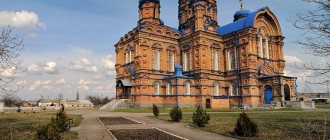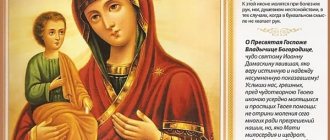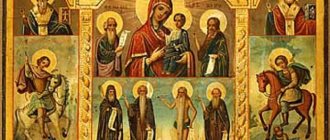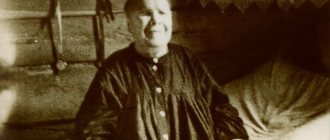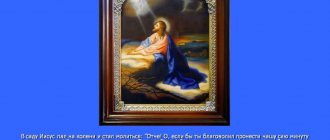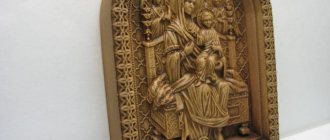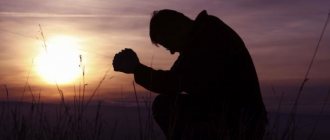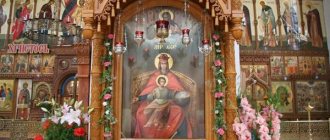Faith is not a frozen set of rules, but a living feeling that grows, develops, expresses itself. Including through the painting of icons. New images also appear, which at first confuse many with their unusualness. For example, the Triflant icon, which depicts the Mother of God as a child.
About the author About the book
It is non-canonical (not officially recognized by church leadership); there are heated debates among believers about whether it can be purchased and used during prayer. But there is interest in the icon, which means it is worth talking about.
"Wrong" icon?
This image appeared several years ago and quickly became popular. Despite the ambiguous attitude of the clergy, people are interested in the icon and want to know its history and meaning. The name means the age of the young Virgin Mary - church tradition says that a three-year-old girl was given to the temple to be raised. There is even a special holiday in the Russian Orthodox Church - Entry into the Temple.
- The icon itself was painted in the Holy Trinity Derman Monastery (Ukraine). It is based on an old picture brought by one of the nuns. When she became abbess, she gave her blessing to paint an icon after her. Although the postcard was brought from Jerusalem, this does not mean that the image is suitable for veneration. But there is no point in sweeping aside something new and unusual.
- Supporters of the icon refer to the fact that the image was painted with a blessing. But in Orthodoxy (as well as other traditional religions), a woman cannot bear the priesthood, and accordingly, she cannot perform the Sacraments (wedding, baptizing, performing the Liturgy, etc.). According to this logic, a nun, even a high-ranking one, also has no right to determine the canons of icon painting.
Work as a courier at Yandex.Eda (up to 3,400 rubles per shift) leave a request →
Although there is no official ban on home use, the image is unlikely to receive the approval of the highest church clergy. Regarding shrines, you can ask yourself the following question: what do they teach, what do they make you think about?
If a picture only evokes a feeling of tenderness, it can hardly be called useful for spiritual growth. Accordingly, its use is undesirable, in some cases it can even be harmful. If the image helps you concentrate on prayer, there is no reason to refuse it.
Information site about icons, prayers, Orthodox traditions.
"Save me, God!". Thank you for visiting our website, before you start studying the information, please subscribe to our Orthodox community on Instagram, Lord, Save and Preserve † – https://www.instagram.com/spasi.gospodi/. The community has more than 44,000 subscribers.
There are many of us like-minded people and we are growing quickly, we post prayers, sayings of saints, prayer requests, and timely post useful information about holidays and Orthodox events. Subscribe. Guardian Angel to you!
Sometimes believers are interested in the question: “What does the Triflant icon mean?” And this is not surprising. After all, this is one of the most mysterious and interesting icons in Orthodoxy. She captivates not only with her external image, but also with the meaning that she carries. It is about this miracle of Christian culture that you can learn from our article.
Points for and against"
Some people do not like the fact that the Triflant Icon of the Mother of God is painted in a Western style. But in Orthodoxy there are many other Western images - for example, “The Spreader of the Loaves”, “Tenderness”, “Recovery of the Lost”. A special case with the image “Three Joys” - initially it was a spiritual painting, a portrait of the holy family. The first such icon did not enjoy special veneration until a miracle happened in front of it. And all Russian icon painting in the 18-19 centuries. was influenced by Western masters.
Supporters of the veneration of the image say that the meaning of the “Threeting” Icon of the Mother of God is that it personifies one of the epithets from the Orthodox service of the Entry of the Blessed Virgin Mary into the Temple. Such epithets are found only in the Russian Orthodox Church, like the holiday itself. Therefore, it is wrong to consider this image Catholic, although there is nothing wrong with it.
- Lily in the hand of the young Mother of God - innocence, virginity. This symbol is also found on other Orthodox icons.
- The blue color of the robe also means virgin purity. Also a traditional color used on icons of the Virgin Mary.
Only loose hair and an uncovered head raise doubts. Now this is prohibited - at least among the Orthodox. Although there are images of the Mother of God where she is without an omophorion: “Seeking the Lost,” “Helper in Childbirth,” “Akhtyrskaya.”
Some representatives of the clergy believe that the meaning of the Triflant icon is not deep enough: the image of a plump, sweet girl does not convey the spiritual height of the Mother of God, which was already present in childhood. If you remove the halo around the head, as well as the traditional inscriptions, it will look more like a postcard than an Orthodox shrine.
Become a courier of the Yandex.Food service right now (up to 3,400 rubles per shift) leave a request →
In 2012, the Triflant icon was prohibited from being used and sold in shops of the Novokuznetsk diocese of the Russian Orthodox Church. The ruling Bishop believes that the image is “non-Orthodox.” Since the icon is not mentioned in the church calendar, it is not officially recognized by church leadership. But the ban is still only in one diocese - it does not apply to the entire Orthodox Church.
Why is it prohibited and who prays?
The Russian Orthodox Church views the icon in one capacity - as a picture painted based on a biblical story. The Triflant is not an icon as such, therefore it is impossible to purchase it in an Orthodox church. There is no ban on the purchase of images by Orthodox people.
The Church acknowledges the existence of the painting. Most priests believe that nothing bad will happen from praying in front of such an “icon,” but they recommend adhering to the canons and offering prayers in front of those images that have long been revered by all Christians.
Prayers offered before the face of the “Three-year-old” are associated with a new addition to the family. The iconographic face is kept by women who have encountered problems conceiving a child. In addition, the “icon” is in demand among parents of girls, since it is considered the patroness of all female children.
The significance of the “icon” is also great for pregnant women who want to bear and give birth to a healthy child. It is recommended to store it under the pillow or at the head of the bed. They pray in front of the “icon” exclusively of the Mother of God, asking for intercession during childbirth and easing pain during labor pains.
At the same time, when bowing before one or another iconographic image, one should understand that it is just a material thing; one should pray not to the icon, but to the saint who is depicted on it. In this regard, one should not attach importance to what kind of icon stands in front of an Orthodox Christian who reads a prayer; faith must be in the heart and soul of a person, everything else seems unimportant.
Differences from the classical composition
In the traditional image of the “Introduction of the Most Holy Theotokos into the Temple,” there are many other elements and characters, without which the meaning of the Triflant icon seems not to be fully expressed.
- The parents of the Blessed Virgin are Joachim and Anna, who brought their daughter to the temple. There are halos around their heads.
- Virgins with candles accompanied the procession. Their ages are different - sometimes they are teenagers, sometimes they are quite mature girls.
- The High Priest meets young Mary and leads her by the hand into the Holy of Holies.
- The angel is the mentor of the Mother of God, feeding her. She herself is depicted nearby, at an older age. Both figures are located above the rest of the composition, as if in the heavens.
- The Most Pure One is depicted wearing an omophorion (with her head covered).
- Often there are steps in the composition, in memory of the legend according to which the girl overcame them herself and without difficulty.
Features of the image of the Mother of God
It is worth noting that the image of the Mother of God traditional for Orthodoxy and Catholicism differs. And if among Orthodox icons it is possible to identify certain common features in the image of the Blessed Virgin, then in Catholicism, along with the traditional face of the Virgin Mary, a rather little-known icon called “Triflant” is also revered.
The Icon of the Mother of God “Thrilling” is not traditional for Western Christians; if the Virgin Mary depicted on it had not been crowned with a halo, and there had not been an inscription characteristic of icons, then, most likely, this rare image would have been mistaken for a painting.
What you need to know about the icon
It should be understood that the Triflant icon refers only to the Western Church and the attitude towards it in the Russian Orthodox Church is not entirely unambiguous. On the one hand, it is not strictly prohibited, and Orthodox people may well have such an image of the Blessed Virgin in their homes. However, it is very difficult to purchase this icon in any Orthodox church, because Russian Orthodoxy does not recognize this image as an iconographic image, considering it nothing more than a painting created on the basis of a biblical story.
Attention! Many priests do not forbid praying in front of this icon, but still consider it best to offer prayers at the icons of the Mother of God, revered in Orthodoxy.
Description of the icon
The Triflant icon depicts the Virgin Mary at the age of 3 years. She is dressed in a blue tunic and holds a large white lily flower in her hands, as the embodiment of pristine purity. Mary’s head is crowned with a halo, which indicates the fact that this is an icon.
More about the icons of the Blessed Virgin Mary:
It is known that the Virgin Mary depicted in the icon does not correspond to the canons of icon painting in a number of ways.
- Firstly, she is depicted with her head uncovered, while in Orthodoxy it is customary to depict the Mother of God always dressed in clothes that cover her head.
- Secondly, when creating the icon, practically not a single detail important for icon painting was taken into account. Only the blue robe for girls remains traditional, which, according to Orthodox priests, indicates little of her spiritual maturity and understanding of her mission.
What do they pray for in front of the holy image?
Orthodox Christians do not spend a single day without prayer to the Mother of God. In any house where baptized people live, you can see at least one icon of the Virgin Mary. What do they pray for in front of the Triflant icon? She is especially revered by those women who have recently learned the joy of motherhood. But it consists not only of positive things, it is, first of all, numerous concerns, concern about the health of your child.
A small child cannot say what is bothering him, he does not understand the meaning of words, and he cannot take care of himself. Therefore, I especially want to protect him from any troubles. It is next to the crib that mothers try to place the icon of the young Mother of God, hoping that She will protect the baby. Such an act is quite understandable, although it does not fit into church canons. An icon is not a talisman; it should be placed on a wall or on a shelf with other shrines.
The size of the image and the technique of its execution can be any. Today, the Triflant icon is available on paper, wood, hand-painted, embroidered with thread or beads. You can take your purchase to the temple for consecration. But the main thing that sanctifies the life of a family is heartfelt prayer, kindness to each other, and patience. A woman should take care of all this, then God’s protection will accompany all her affairs.
About the author About the book
Where better to place
Catholic Christians hang an image of the Virgin Mary at the head of a baby's crib.
So “Three-year-old” will protect the child from misfortunes and diseases. And the gender of the baby is unimportant, the main thing is that the Mother of God will bestow blessings on the baby and protect him from adversity. Catholics allow not only painted icons, but also hand-made images to be placed in the house. For example, embroidery with beads, rhinestones, silk. It is customary to consecrate home-made items in the church and place them at the head of the cradle. It is allowed to have several icons in the house.
An icon at the head of the bed will protect the baby from harm
The icon is placed at the head, so candles are rarely lit in front of the icon. An exception is a prayer to save a child on the road. For example, when a daughter or son is staying late on a visit, traveling from another city, the parents light a candle and pray, asking the Mother of God for a successful completion of the matter.
What does the Triflant Icon help with?
Each believer can find his own meaning in the Triflant icon; of course, it can help in the difficult task of spiritual ascent to God. The Queen of Heaven, undoubtedly, already at that age possessed spiritual wisdom, meekness and other positive qualities. Therefore, there is nothing sinful in praying in front of this image.
You can use any prayer to the Mother of God for this, preferably the canonical one. The attitude towards new images can be tolerant, as for prayers - here caution will not be superfluous. Using “fresh” unverified texts it is much easier to fall into temptation.
- Icon "Three-handed"
- Icon of Joy and Consolation - here
- Icon “Unbreakable Wall” -
What should any icon help with? It should contribute to spiritual growth, the same applies to the image of “Threeling”. Andrei Rublev also painted his icons outside the canons; only decades later were people able to appreciate the full scale of his talent. Even if this image was originally just a postcard, but if it evokes holy feelings, an incentive to prayer, it is quite possible to have it in your home iconostasis.
